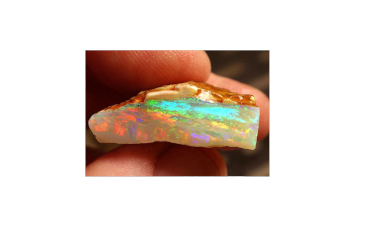- Series:God’s Design, Transcript English
Proverbs 20: 15
“There is gold, and a multitude of rubies: but the lips of knowledge are a precious jewel.”
 Opals are precious multicolored gemstones made primarily of silica. How do they form? Scientists admit that much of the chemistry is not well understood. However, according to the traditional explanation, their formation begins as water filters through silica-rich rock, dissolving some of the silica. When that water passes through a cavity in a suitable rock, the silica precipitates as a film on the wall of the cavity. After tens of millions of years, say the scientists, you will have an opal.
Opals are precious multicolored gemstones made primarily of silica. How do they form? Scientists admit that much of the chemistry is not well understood. However, according to the traditional explanation, their formation begins as water filters through silica-rich rock, dissolving some of the silica. When that water passes through a cavity in a suitable rock, the silica precipitates as a film on the wall of the cavity. After tens of millions of years, say the scientists, you will have an opal.
Now opals have been found along with fossilized soil bacteria, similar to typical soil bacteria you find today. With this finding, some scientists have suggested that the acids produced by the bacteria may have helped form the opals. They propose that the acids produced by the bacteria dissolved some of the minerals in nearby feldspar, forming the opals. Obviously, this process would not take as long as the purely natural process traditionally thought to form opals. Other geologists are reluctant to give bacteria any credit for opal formation. However, one opal expert, Dr. Len Cram, has been growing opals in a process that takes only a few months.
Creationists do not oppose real knowledge. We know that when truth is discovered it will never contradict Scripture. Actually demonstrating that opals can be produced in a matter of months is far better science than speculating about it taking millions of years.
Prayer: Thank You, Lord, for revealing the truth of salvation in Jesus Christ to us in Your inerrant Word, the Bible. Amen.
Ref: Creation, 12/00-2: 2001, p. 5, “Opals from Bacteria?” Photo: Multicolor rough crystal opal from Coober Pedy, South Australia. Courtesy of Dpulitzer. (CC-BY-SA 3.0)
© 2022 Creation Moments. All rights reserved.
